Fighting the rising tide, Fort Pulaski plans upgrades to prepare for floods, storms
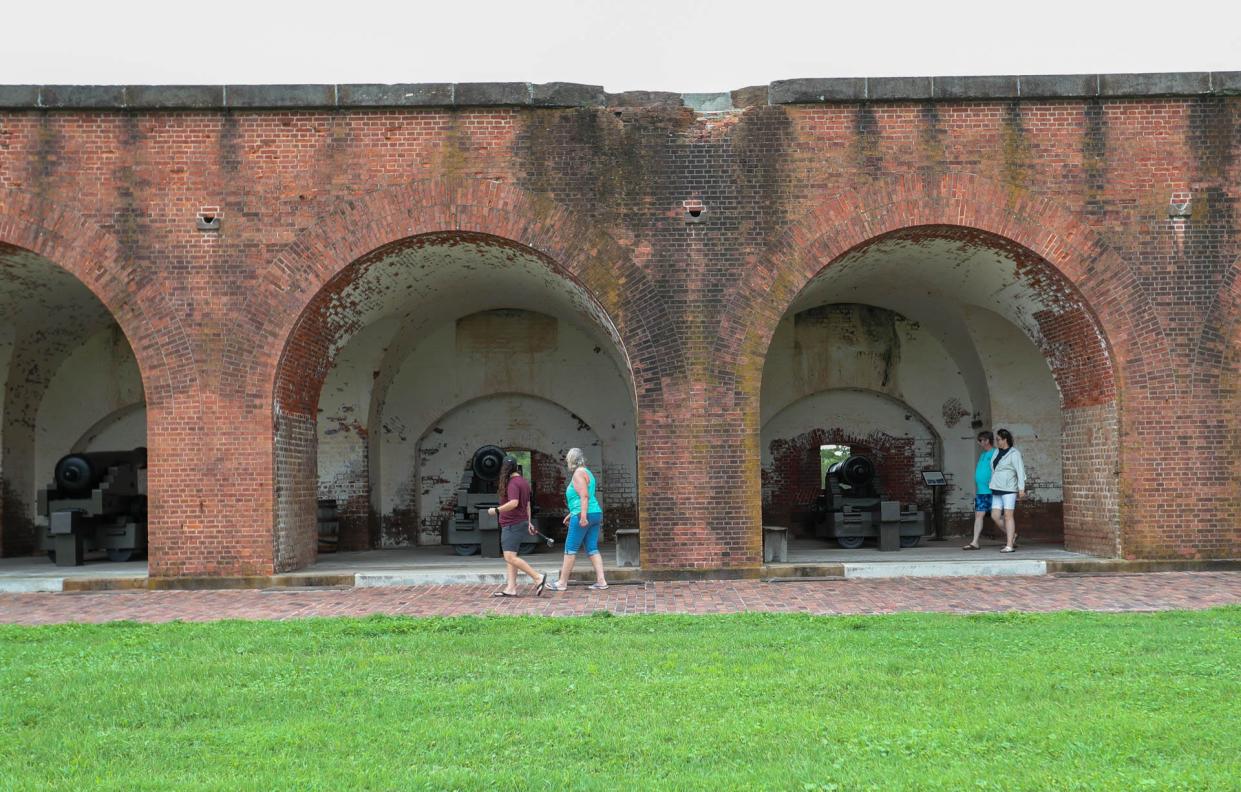
What is beloved about Fort Pulaski National Monument is its age and history, but even historical sites need a face lift every now and then.
To keep up with its growing visitor demands and stave off the impacts of climate change, Fort Pulaski's National Park Service staff held a public meeting June 22 to share with the community planned updates for the park. Some of those changes will be obvious to visitors, such as moving the entrance station farther onto the island from Highway 80 to alleviate traffic and handicap accessibility at the picnic area, while others are focused on behind-the-scenes necessities that make the park operate smoothly, like maintenance buildings and long-term volunteer campsites.
Ultimately, the staff's changes are aimed at making the national monument resilient to storms and sea-level rise while improving visitors' experiences. To view an interactive map of the proposed changes, click here, or visit http://bit.ly/fort-pulaski-map.
Details and specifics of the plan: History in the making? Fort Pulaski changes call for public comments
Explainer: Savannah's sea level is rising faster than other coastal cities. How is that possible?
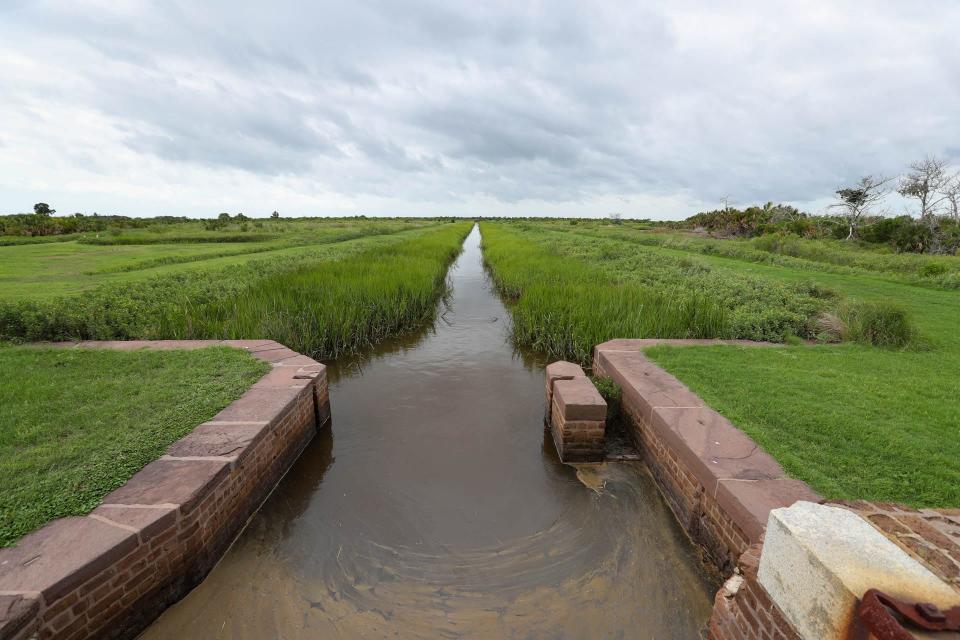
Planning ahead: Stronger storms, longer seasons: How hurricanes will change in Georgia's rising waters
Storms and sea-level rise have degraded infrastructure
Situated on Highway 80 on the drive east to Tybee Island, Fort Pulaski was built starting in 1829 and took on its famous canon-marks during the American Civil War. It is also home to a National Oceanic and Atmospheric Administration tide gauge which has been measuring the sea-level at the location for more than 80 years since it started recording in 1935, a critical resource for scientists and local governments on the coast.
The fort's location on the stretch of highway makes it a lone standing destination vulnerable to storms: One public commenter noted that the only thing standing between Fort Pulaski and the Atlantic Ocean "is a wire fence."
Recent history has shown that vulnerability clearly. Hurricane Matthew in 2016, Hurricane Irma in 2017 and a tornado between the two buffeted the fort leaving staff with little reprieve. Each of the hurricanes brought 1.5 to 2 feet of water into the maintenance building, according to the site's Visitor Services Program Manager Joel Cadoff, not to mention less severe but regular flooding from storms, high tides and king tides. As Fort Pulaski superintendent Melissa Memory noted, the park can't be maintained if the staff don't even have a safe space to put their tools.
According to the proposed plan, before storm events the park staff spend two to four days moving equipment out of storm-vulnerable locations and relocating off site. Typically, this happens two to five times per year.
"Within three years we had three major natural disasters here, and when we started rebuilding the park we realized everything was negatively impacted," Memory said. "And things that were already obsolete, or old, or should have been upgraded years ago were really just devastated."
The updated plan moves employee facilities to higher ground, replacing older buildings that are susceptible to storms and weren't meant for long term use. Employees noted that some of the facilities in use include a World War II era garage and temporary trailers.
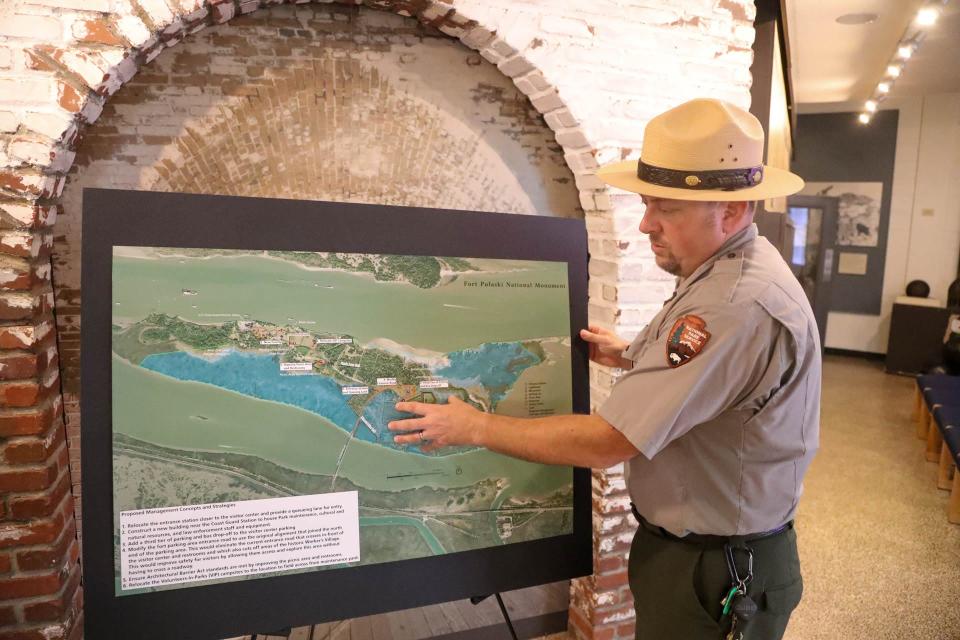
On site: Digging up the past: Archaeology at Fort Pulaski tells new stories of old times, land
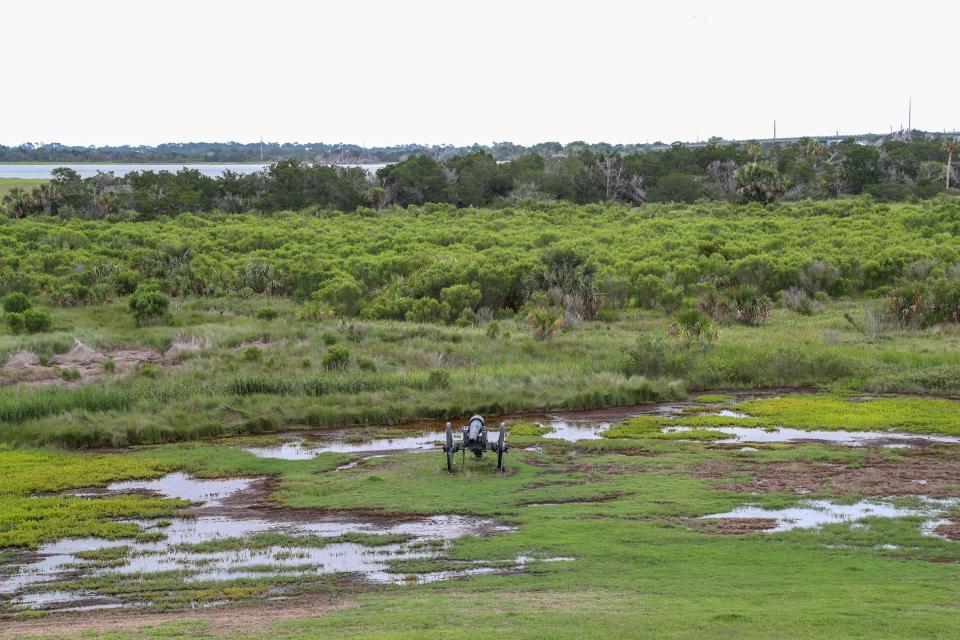
Public comments ask about school bus access, local fishing
These are initial ideas and thoughts, Cadoff said, and the staff is looking to amend plans based on public input. For ideas and comments to be heard, they should be submitted to the National Park Service's website for the project.
Public commenters, including community members, teachers and past Fort Pulaski volunteers, noted that the updates to facilities were much needed. Inquiries about the parking included an ask that the park consider options for school bus parking for school groups, as well as how the park planned to maintain the entry parking that includes the entrance to the McQueen's Island Trail.
Another question about relocating the entrance station was whether or not the gate will remain where it is or be moved, since locals tend to fish after or before the park opens at the entrance area. Since the plans haven't been finalized, Cadoff said these comments would be taken into consideration as they make a proposal to the National Park Service.
Public reviews of the plan will take place from June to July 2024, and the plan will go through another round of revisions based on comments. During November and December 2024, the staff will make a final decision on the plan.
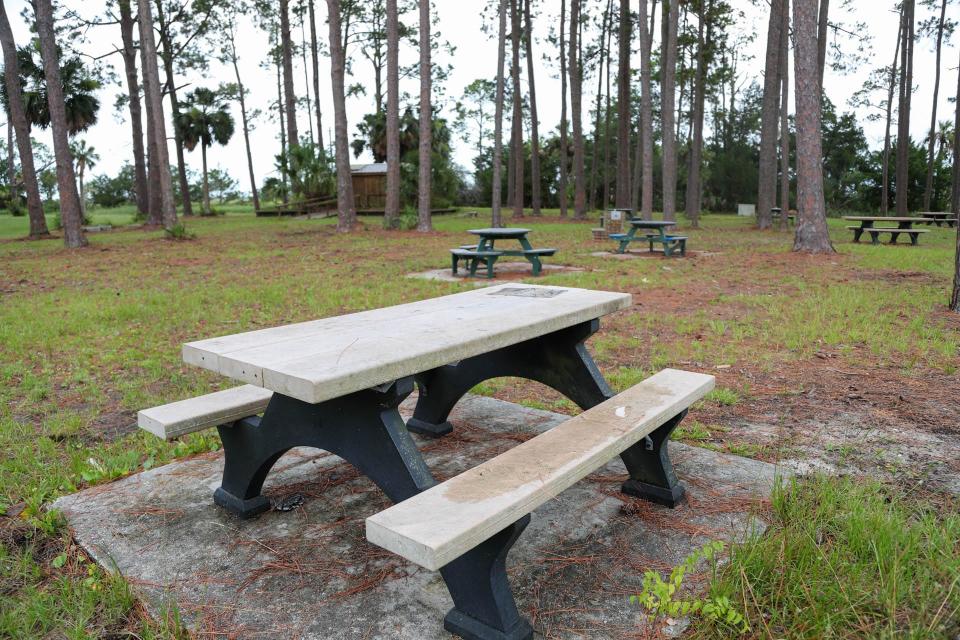
Larger projects down the pipe
While public commenters chatted with Fort Pulaski staff about several changes and how they could serve the public, one of the more popular questions had to be tabled for a later date: the bathrooms.
Fort Pulaski has a potty problem, in large part due to the rising sea-level on site. Septic tanks around the property have failed due to constant inundations. Memory said the fort had already lost several of its restrooms, replacing them at places like the picnic area with porta-potties, and the rest of the septic tanks are on their last legs. The only one in good order is the restroom at the visitor's center, which was replaced after Hurricane Matthew.
The solution is still in pre-planning phases, Memory said. Of the potential plans, she said that the historic site has considered attempting to tie into Tybee Island's wastewater system or creating its own on-site package wastewater treatment facility.
Marisa Mecke is an environmental journalist. She can be reached at mmecke@gannett.com or 912-328-4411.
This article originally appeared on Savannah Morning News: Fort Pulaski upgrades fight sea-level rise, storms, climate change

